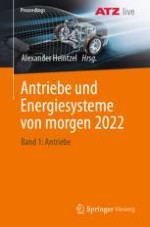2023 | Buch
Über dieses Buch
Inhaltliche Schwerpunkte des Tagungsbands zur ATZlive-Veranstaltung "Antriebe und Energiesysteme von morgen 2022" sind elektrifizierte Antriebsstränge, Wasserstoff in der Fahrzeugtechnik sowie Systems Engineering. Die Tagung ist eine unverzichtbare Plattform für den Wissens- und Gedankenaustausch von Motoren- und Fahrzeugherstellern, deren Zulieferer und Entwicklungspartner, Lehrende und Ingenieure von Universitäten und Hochschulen, Vertreter von Behörden und Verbänden sowie für Techniker, die in diesem Themengebiet aktiv sind.
Der Inhalt
Systemarchitektur.- Gesamtsystem.- Systemoptimierung.- FCEV- und H2-Technologie.
Die Zielgruppen
Fahrzeug- und Motoreningenieure sowie Studierende, die aktuelles Fachwissen im Zusammenhang mit Fragestellungen ihres Arbeitsfeldes suchen - Professoren und Dozenten an Universitäten und Hochschulen mit Schwerpunkt Kraftfahrzeug- und Motorentechnik - Gutachter, Forscher und Entwicklungsingenieure in der Automobil- und Zulieferindustrie
Der Veranstalter
ATZlive steht für Spitzenqualität, hohes Niveau in Sachen Fachinformation und ist Bestandteil der Springer Fachmedien Wiesbaden GmbH, ein Teil von Springer Nature. Hier wird unter einem Dach das Know-how der renommiertesten Wirtschafts-, Wissenschafts- und Technikverlage Deutschlands vereint.
Anzeige
